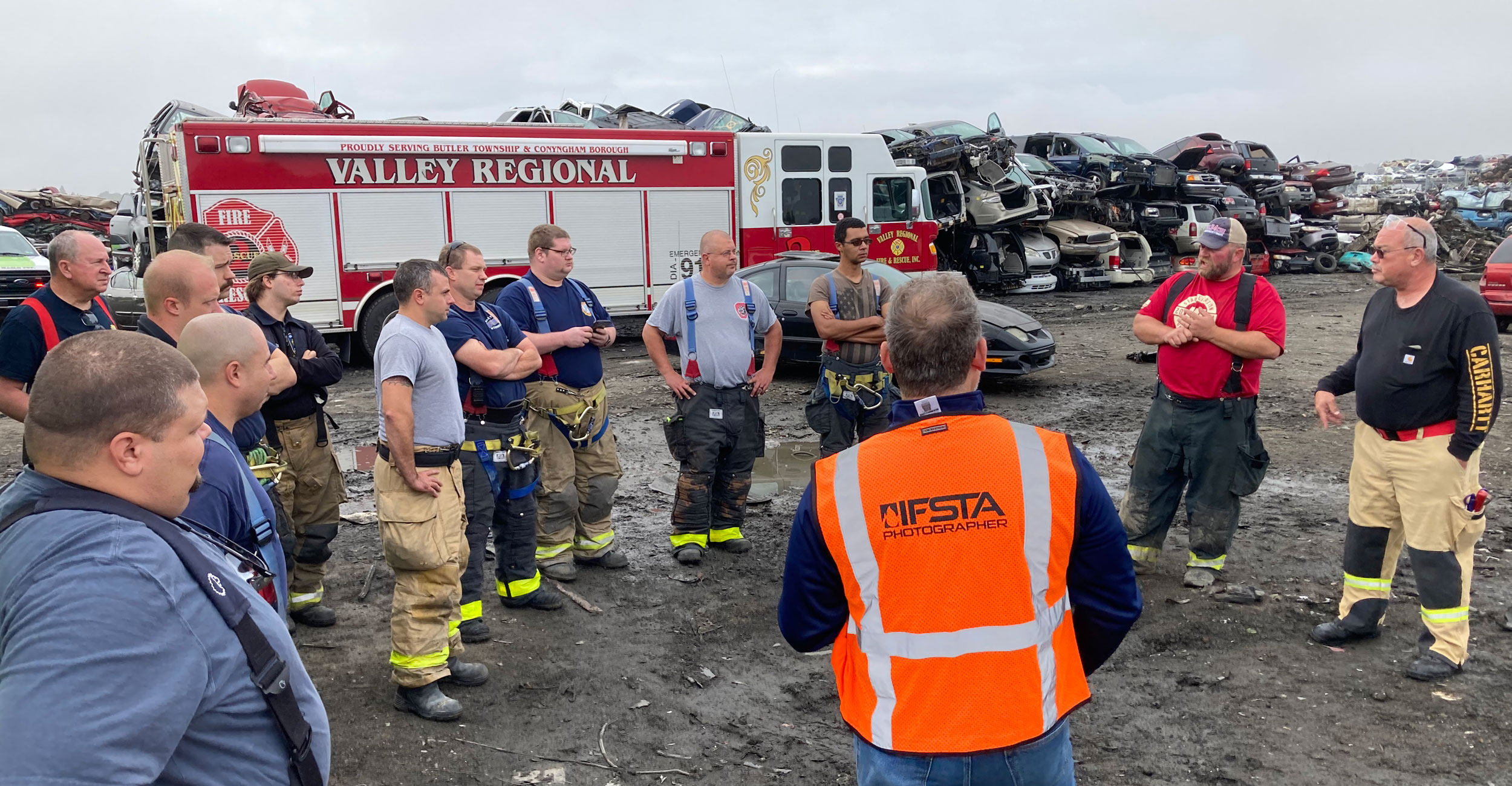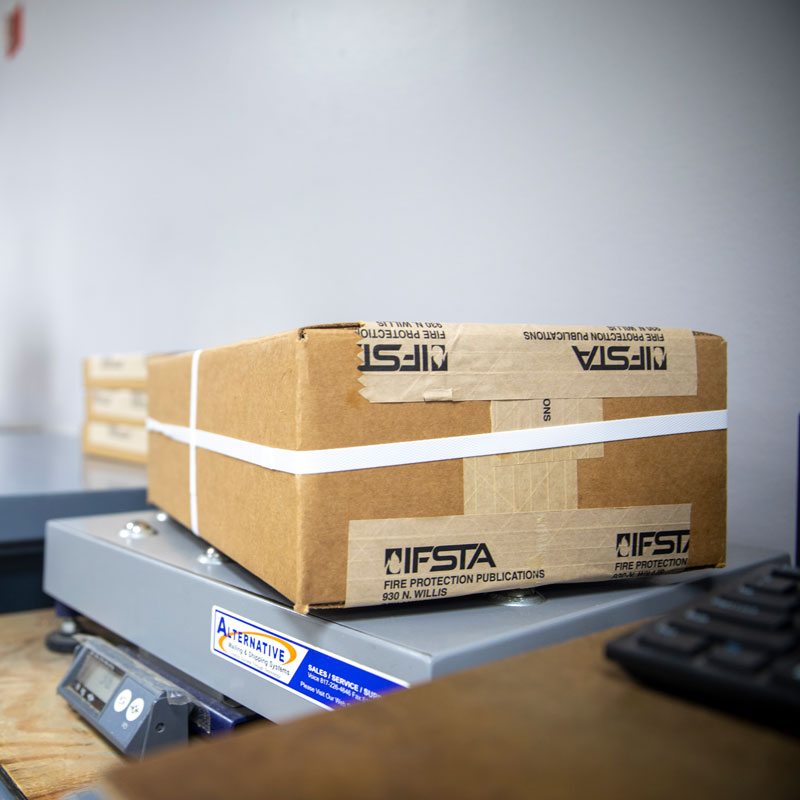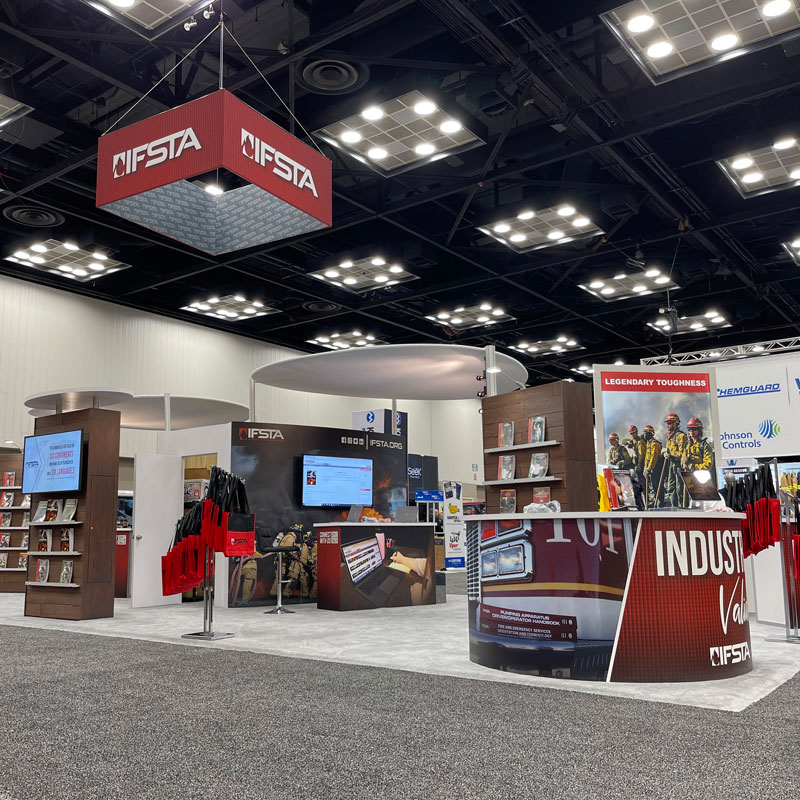
The people are the heartbeat of Fire Protection Publications
Monday, December 5, 2022
Media Contact: Kristi Wheeler | Manager, CEAT Marketing and Communications | 405-744-5831 | kristi.wheeler@okstate.edu
Forty-three men gathered in 1933 at the Central Fire Station in Stillwater to develop a firefighter training curriculum for the state. Little did they know, they were building the foundation for what has become the world’s leading publisher of firefighter training materials.
Fire Protection Publications (FPP) — an extension unit in the College of Engineering, Architecture and Technology at Oklahoma State University — is now also the headquarters of the International Fire Service Training Association (IFSTA).
FPP and IFSTA owe a lot to the early leaders of the program. Fred Heisler attended that first meeting in 1933 and later developed a course of study for firefighter training that guided the development of the first texts — the Redbooks. In 1955, Everett Hudiburg took Heisler’s place as editor and maintained the continuity of the programs. Emeritus Director Harold Mace can be credited for much of IFSTA and FPP’s growth during his tenure from 1969 to 1992. Under Mace, IFSTA formalized its organizational status and initiated an executive board to oversee its operations.

FPP and the IFSTA Executive Board work hand in hand to develop IFSTA manuals and training materials that are now known worldwide. Today, about 80 full-time, part-time and student employees contribute to FPP’s operation.
In short, FPP and IFSTA exist to meet the training needs of volunteer and career firefighters and fire personnel from entry level to leadership, according to FPP managing editor Colby Cagle.
“The biggest difference between IFSTA and FPP manuals is that IFSTA books go through a validation process,” Cagle said. “Subject matter experts are selected to serve on those validation committees, so IFSTA products are written by firefighters, for firefighters.”
It’s not uncommon for the IFSTA Delegate Selection Committee to sort through upwards of 100 candidate applications to fill a 20-person validation committee. They must keep in mind the need to select diverse committee members — considering region, ethnicity, career focus, length of service and other factors — to ensure the widest representation of voices is available.
Each year, in January and July, the FPP staff hosts the annual IFSTA Winter Meeting and IFSTA Validation Conference, respectively. These conferences are where a large portion of the work between the validation committee members and FPP staff members takes place. The International Fire Service Journal of Leadership and Management Research Symposium is held in conjunction with the IFSTA Validation Conference.
“Between the IFSTA conferences and research symposium, we’re able to keep up with issues, trends and research topics that are coming forward,” Cagle said. “By hosting these events, we’re able to collect that knowledge firsthand.
From the first Redbook published in 1933 to the current 1,400+ page Essentials of Fire Fighting, 7th Edition, the goal of IFSTA manuals has always been to meet the training and accreditation needs of individuals and ensure the content is current and applicable to industry standards and trends.
FPP titles do not go through the same validation process, but are written by credible authors to address more specific needs of firefighters and other first responders than the scope of IFSTA manuals may allow.
“The best thing about my job is the reconnection to my fire service brothers and sisters that comes with attending the IFSTA conferences,” said Jeff Fortney, FPP senior editor. “I’ve been out of the field since 1986, but being in rooms with these current industry leaders … I’m updating my knowledge, learning new things and then I get to make sure those things make it into our manuals.”
A former firefighter himself, one of Fortney’s first projects with FPP was reshooting the black-and-white photos in color for the Essentials of Fire Fighting, 4th Edition. Fortney is currently the lead editor on the Essentials of Fire Fighting, 8th Edition, scheduled for release in 2024.
“We involve the people who live this stuff,” he said. “If there’s a procedure in a manual that isn’t used in the field anymore, we are able to remove it to stay as relevant and up-to-date as possible.”
Fortney recalls a “great expansion” of the FPP staff’s capabilities throughout his career. Along with a shift from black-and-white to full color manuals and from overhead projectors to Zoom meetings, those expansions include the implementation of ResourceOne (R1), IFSTA-FPP’s learning management system (LMS), and development of electronic learning products.
The first courses on ResourceOne launched in 2012. According to eProducts project manager Sarah Axtell, R1 exists to meet the needs of both learners and instructors while maintaining a high-quality educational environment.
“ResourceOne isn’t a one-size-fits-all LMS,” Axtell said. “One of the things that makes it a unique resource is the capability for instructors to customize the courses to fit not only our content, but to incorporate their own as well. When used to their full potential, the customization capabilities create this transactional learning opportunity for R1 instructors and students, which gives them a higher return on their time investment.”

The goal for R1 and IFSTA-FPP eProducts is to provide intentional interactions with digital content. In an increasingly digital world, the FPP staff have kept innovation at the forefront of their minds when considering product development — the IFSTA eProducts are directly tied to the validated manual materials, so if a print textbook isn’t the preferred method of learning for a student, they have the option to use the eBook or supplement their studying with a companion app.
“No matter where they are, we’re just trying to create accessible learning opportunities for students using IFSTA and FPP products for their training,” Axtell said. “In the past, our department has been instructor-focused, and we’re seeing the need to shift, to identify the needs of two separate audiences: our instructors and our individual learners.”
At the core of it all, the staff at FPP are truly the heartbeat of the organization. They don’t come to work every day in anticipation of seeing their name printed in a manual. They come to work for the opportunity to make a difference in the fire service industry.
“IFSTA is a big deal,” said Clint Clausing, FPP editorial manager. “You don’t necessarily see that by being in the office every day, but as soon as you get out with the firefighters, at our conference or on a photoshoot, you start to see how important our work is to the fire service and to the world.
“We do it all with about 80 people. We’re this wonderfully well-kept secret that is inspiring to be a part of.”
Photos: Fire Protection Publications
Story by: Peyton Haley | IMPACT Magazine
